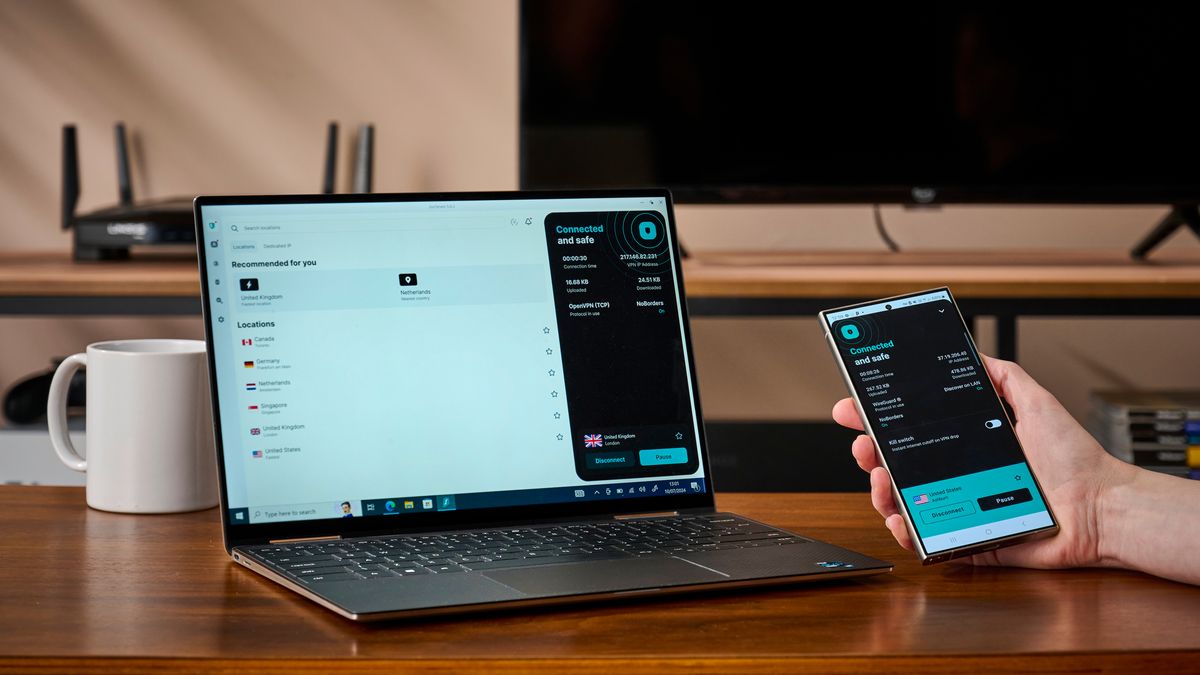
With just a few months remaining until the Windows 10 end-of-support date, Microsoft seems to have belatedly realized that owners of tens of millions of consumer PCs running Windows 10 aren't ready to replace their old computers, and they're also not about to fork over $30 for a one-year Extended Security Updates (ESU) subscription.
So, at the end of June, just days before the end of its fiscal year, the company waved the white flag and announced new "free enrollment options" for the ESU program, along with a description of the steps customers will need to follow to sign up. Anyone willing to try out Microsoft's cloud-based Windows Backup or spend a few minutes per day with the Bing search engine over the course of a week can avoid the $30 tariff and get that subscription for free using the enrollment wizard shown here.
Microsoft is offering a year's worth of free security updates to owners of Windows 10 PCs.
The news was buried in yet another long-winded post on the Windows Blog, which praises Windows 11 and encourages business customers to upgrade their old PCs, buy new ones, or migrate to cloud-based alternatives like Windows 365.
Also: Can't quit Windows 10? You can pay Microsoft for updates after October, or try these alternatives
That announcement applies to tens of millions of consumer PCs that are ineligible for the free Windows 11 upgrade because they don't meet compatibility requirements. Enterprise customers are ineligible for the free options and will be required to pay a significantly higher price (starting at $61 per device per year, and then doubling each year after that) for up to three years of a commercial ESU subscription. Those business options are available through the Microsoft Volume Licensing Program today; Microsoft's Cloud Service Provider partners will be able to begin selling the commercial ESUs starting Sept. 1.
ESU coverage for personal devices runs from October 15, 2025, through October 13, 2026. The ESU subscription is tied to a Microsoft account and can be applied to as many as 10 PCs when signed in using that account.
Who's eligible?
The option to sign up for an ESU subscription from a personal Windows 10 PC is available in Windows Insider builds today, and the company says it will begin rolling out to additional Windows 10 PCs in July, with broad availability expected by mid-August.
The option will be available to any PC running Windows 10, version 22H2, Home, Professional, Pro Education, and Workstation editions, with the latest update installed. Enterprise and Education editions are not eligible. The option will also be unavailable on any PC that is joined to an Active Directory domain, Entra ID-joined, or registered with Mobile Device Management software such as Windows Intune. (Full instructions are available in this Microsoft Support document.)
You must be signed in with an administrator account. Because the ESU subscription is tied to a Microsoft account, you will also need to sign into a Microsoft account as part of the enrollment process.
How to sign up
I was able to test the enrollment process on a PC running the Release Preview edition of Windows 10 Pro. The sign-up link is available in Settings > Windows Update, as shown next:
On a personal device running the latest Windows 10 version, you'll find this link to sign up for Extended Security Updates.
Clicking "Enroll now" opens the enrollment wizard. Because I was signed in with a Microsoft account and had previously used the Windows Backup program to save my settings to Microsoft's cloud, I was waved right through with the following message:
If you're signed in with a Microsoft account and you've already used the Windows Backup program, you'll be able to enroll for free, immediately.
If you're signed in with a local account, or if you haven't previously run Windows Backup, you'll need to jump through a few extra hoops. You'll see this page in the enrollment wizard instead.
The free options require a commitment using a Microsoft account.
The easiest of the free options is to use Windows Backup to sync your settings to the cloud. If you'd rather not do that, you can redeem 1,000 Microsoft Rewards points or pay $30 (outside the US, local pricing will vary).
Also: How to upgrade your 'incompatible' Windows 10 PC to Windows 11 - 2 free options
As I've previously noted, this option is available only for "personal use," a move that's obviously designed to discourage business customers from trying to get security updates at a discount. In small businesses that aren't part of a managed Microsoft environment, it would be impossible to enforce that restriction, so Microsoft has wisely decided to block personal ESU subscriptions only on commercial devices that are part of a managed enterprise network.
What's the catch with the free options?
Using Windows Backup to "sync your settings to the cloud" sounds like a simple option, but that option might not work for you. As it currently exists, the Windows Backup option also copies personal data to the OneDrive cloud storage service. If you have a substantial amount of data and haven't paid for a Microsoft 365 Home or Personal subscription or a standalone storage upgrade, you'll burn through the 5GB of default storage and possibly wind up with a big mess.
Also: Can't upgrade your Windows 10 PC? Here are your options before it all ends in 3 months
Redeeming 1,000 Microsoft Rewards points is a simpler option. If you've already created a personal profile using your Microsoft Account in Edge, you might have already amassed enough points to cover that cost (those points would be worth a little under $1 if redeemed for an Amazon gift card). If your Microsoft Rewards count is starting from zero, you can quickly cover the bill by downloading the Bing app for mobile and using it for two days (500 points), then doing a series of search-based quizzes, polls, and other silly tasks for a few days to accumulate 100-200 points per day on the Microsoft Rewards site.
And if none of those options work for you ... well, that will be $30, please.
Also: 400 million Windows PCs vanished in 3 years. Where did they all go?
These announcements represent a pretty big climb-down for Microsoft and a tacit acknowledgment that the population of Windows 10 PCs still in use in October is likely to be much larger than expected. The new ESU options won't change the end-of-support date for Windows 10, but they do offer a one-year reprieve for price-sensitive consumers and a chance for Microsoft to soften the inevitable PR hit it will take at the end of 2025.
Get the morning's top stories in your inbox each day with our Tech Today newsletter.

 3 months ago
30
3 months ago
30








 English (US) ·
English (US) ·